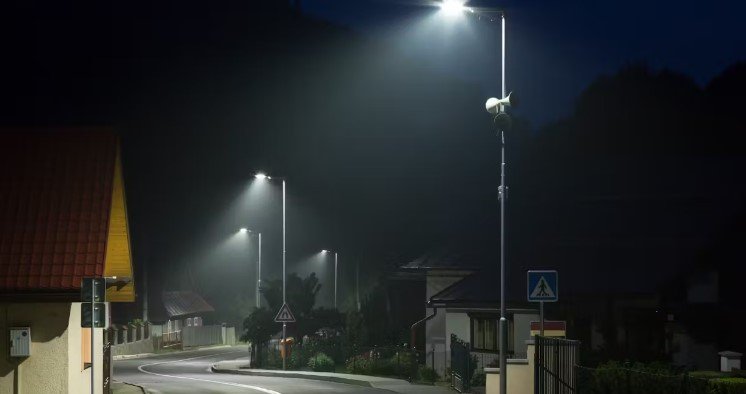Have you ever strolled through the city streets at night, feeling safe and guided by the comforting glow of street lights? Behind the scenes, there’s a marvel of technology at work, ensuring those lights shine bright exactly when needed. Welcome to the world of Street Light Control , where efficiency meets safety in the most illuminating way possible.
Understanding Street Light Control
Street light control refers to the management and regulation of street lighting systems to optimize their performance. It involves various technologies and strategies aimed at improving energy efficiency, reducing maintenance costs, and enhancing overall effectiveness.
Types of Street Light Control Systems
Centralized Control Systems
In centralized systems, a central command center regulates all street lights in a particular area. This allows for synchronized operations and efficient troubleshooting.
Decentralized Control Systems
Decentralized systems distribute control functions across multiple nodes, providing greater flexibility and resilience. They are often used in larger urban areas where a centralized approach may be impractical.
Automatic Light Sensors
Automatic light sensors are integral to modern street light control. These sensors detect ambient light levels and adjust the brightness of street lights accordingly. This not only saves energy but also ensures optimal visibility for pedestrians and motorists.
Remote Monitoring and Control
With remote monitoring and control, authorities can oversee street light operations from a central location. This enables proactive maintenance, timely repairs, and real-time adjustments based on changing conditions.
Energy Efficiency Measures
Efficiency is a key focus of street light control. By employing LED technology, optimizing lighting schedules, and implementing smart dimming features, cities can significantly reduce energy consumption and carbon emissions.
Benefits of Advanced Street Light Control
Advanced street light control offers numerous benefits, including cost savings, improved safety, reduced light pollution, and enhanced quality of life for residents. It’s a win-win solution for both municipalities and citizens alike.
Smart Cities Integration
Street light control is an integral part of smart city initiatives. By integrating lighting systems with other urban infrastructure, cities can create more sustainable, interconnected environments that prioritize efficiency and innovation.
Maintenance and Upkeep
Regular maintenance is essential to ensure the reliability and longevity of street light systems. From cleaning fixtures to replacing faulty components, proactive upkeep is key to avoiding costly downtime and service disruptions.
Future Innovations in Street Light Control
The future of street light control looks bright, with ongoing research and development leading to exciting new innovations. From self-diagnosing systems to predictive maintenance algorithms, the possibilities are endless.
Environmental Impact Considerations
As cities strive to become more environmentally conscious, street light control plays a crucial role in minimizing ecological footprint. By using energy-efficient technologies and responsibly managing light pollution, we can preserve our planet for future generations.
Cost-effectiveness
Investing in street light control is not just environmentally responsible; it’s also financially prudent. By reducing energy consumption and maintenance expenses, cities can achieve significant long-term cost savings that benefit taxpayers and municipal budgets.
Community Involvement
Engaging the community in street light control initiatives fosters a sense of ownership and responsibility. Whether through public forums, educational programs, or citizen feedback mechanisms, involving residents ensures that lighting solutions align with local needs and preferences.
Ensuring Safety
Safety is paramount in street light control. By maintaining well-lit thoroughfares, pedestrian crossings, and crime-prone areas, cities can create safer environments for everyone. Timely repairs and proactive monitoring help address potential hazards before they escalate.
Regulatory Compliance
Adhering to regulatory standards and guidelines is essential for street light control. From environmental regulations to safety codes, municipalities must ensure compliance with legal requirements to avoid fines, penalties, and liability issues.
Conclusion
In the ever-evolving landscape of urban infrastructure, street light control stands out as a shining example of innovation and efficiency. By harnessing technology, optimizing resources, and prioritizing community well-being, cities can illuminate the path to a brighter future.
FAQs (Frequently Asked Questions)
- How does street light control contribute to energy savings?
Street light control systems use automatic sensors and smart scheduling to adjust lighting levels based on actual need, reducing unnecessary energy consumption.
- Can street light control systems be integrated with other smart city technologies?
Yes, street light control is often part of broader smart city initiatives, allowing for seamless integration with other urban infrastructure such as traffic management and waste disposal.
- What measures are in place to ensure street light safety?
Regular maintenance, remote monitoring, and timely repairs are key to ensuring the safety and reliability of street light systems.
- How do street light control systems impact light pollution?
By using directed LED lighting and smart dimming features, street light control systems help minimize light pollution and preserve the night sky for astronomical observation and wildlife habitats.
- Are there any regulatory requirements for street light control?
Yes, municipalities must comply with various regulations and standards governing street lighting, including environmental regulations, safety codes, and energy efficiency guidelines.

